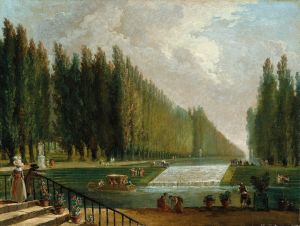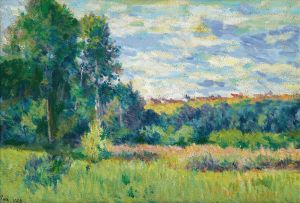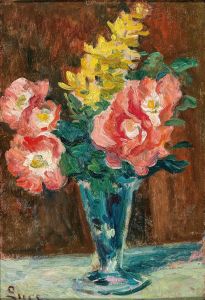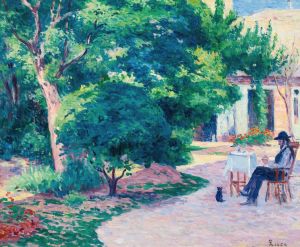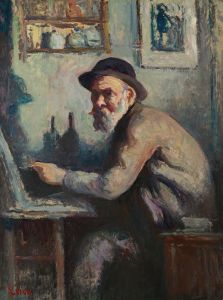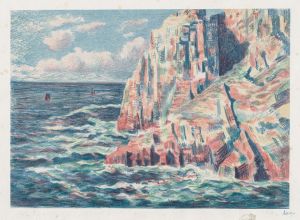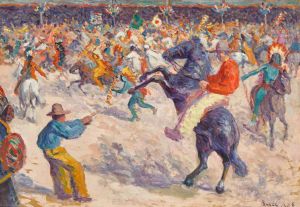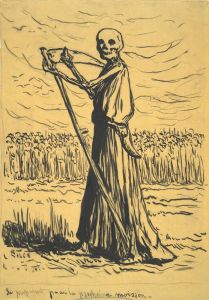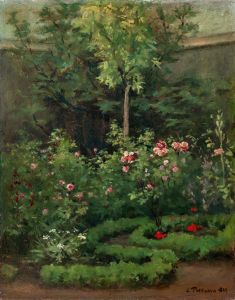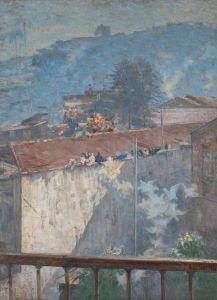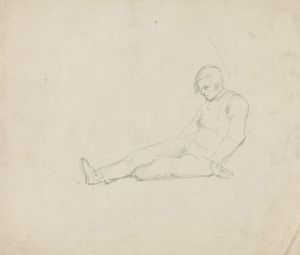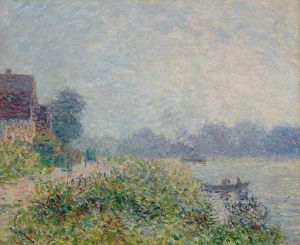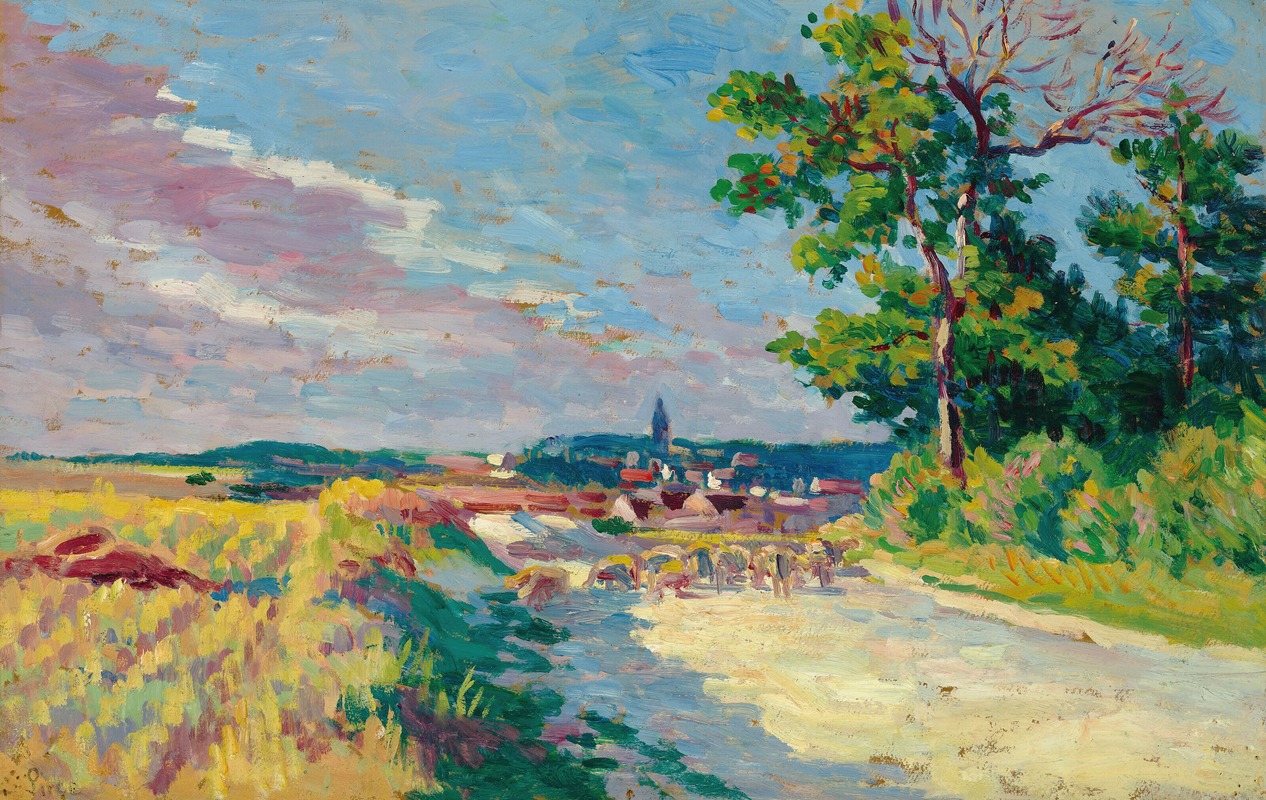
Paysage à Méréville
A hand-painted replica of Maximilien Luce’s masterpiece Paysage à Méréville, meticulously crafted by professional artists to capture the true essence of the original. Each piece is created with museum-quality canvas and rare mineral pigments, carefully painted by experienced artists with delicate brushstrokes and rich, layered colors to perfectly recreate the texture of the original artwork. Unlike machine-printed reproductions, this hand-painted version brings the painting to life, infused with the artist’s emotions and skill in every stroke. Whether for personal collection or home decoration, it instantly elevates the artistic atmosphere of any space.
Maximilien Luce was a prominent French Neo-Impressionist artist known for his contributions to the Pointillist movement. Born in Paris in 1858, Luce initially trained as an engraver before turning to painting. He became associated with the Neo-Impressionists, a group of artists who expanded upon the Impressionist movement by employing a technique known as Pointillism, which involved applying small, distinct dots of color to the canvas to create an image.
One of Luce's notable works is "Paysage à Méréville," a painting that exemplifies his mastery of the Pointillist technique and his keen interest in capturing the effects of light and atmosphere. While specific details about the painting's creation and provenance are limited, it is known that Luce often depicted landscapes and scenes from everyday life, focusing on the interplay of light and color.
Méréville is a commune in the Essonne department in Île-de-France, a region known for its picturesque landscapes and historical significance. The area provided a rich source of inspiration for many artists during the late 19th and early 20th centuries. Luce's choice of Méréville as a subject reflects his interest in capturing the serene and pastoral beauty of the French countryside.
In "Paysage à Méréville," Luce employs the Pointillist technique to great effect, using small, precise brushstrokes to build up the image. This method allows for a vibrant interplay of colors, as the viewer's eye blends the dots of paint from a distance, creating a cohesive and luminous scene. The painting likely captures the natural beauty of Méréville, with its lush greenery and tranquil atmosphere, though specific elements of the composition are not detailed in available records.
Luce's work is characterized by his commitment to social and political themes, often depicting the lives of the working class and the impact of industrialization. However, in his landscapes, he focused more on the aesthetic qualities of light and color, demonstrating his versatility as an artist. "Paysage à Méréville" fits within this context, showcasing his ability to convey the serene beauty of nature through his distinctive style.
Throughout his career, Luce remained dedicated to the principles of Neo-Impressionism, even as the art world evolved and new movements emerged. His works are celebrated for their technical precision and emotional depth, and he is regarded as a key figure in the development of modern art in France. Luce's paintings, including "Paysage à Méréville," continue to be studied and admired for their innovative use of color and light.
While specific exhibitions or collections featuring "Paysage à Méréville" are not widely documented, Luce's works are held in numerous public and private collections worldwide. His contributions to the Neo-Impressionist movement have cemented his legacy as an influential artist who captured the essence of his time through his unique artistic vision.





